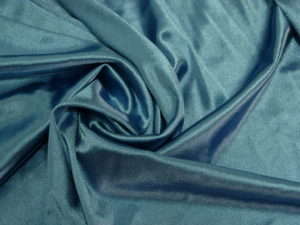 Polyester - This is a woven fabric for the production of which polyester fibers are used. The shape of the fibers, as well as the type of their weave, determines the appearance and characteristics of the material.
Polyester - This is a woven fabric for the production of which polyester fibers are used. The shape of the fibers, as well as the type of their weave, determines the appearance and characteristics of the material.
Most people try to choose clothes made from natural fabrics. The reason for this is the belief that materials made from synthetic fabric are not only uncomfortable to wear, but also harmful to well-being and health. This statement is not entirely correct.
High-quality polyester, in the production of which the most modern equipment and only high-quality raw materials were used, combines not only practicality, attractive appearance and relatively low cost, but also safety for human health.
Polyester is a product of oil and gas processing. The process of obtaining fibers includes the following steps:
Trying to give the material additional properties, chemists create combinations of polyester with other fibers, both synthetic and natural. This results in fabrics that are only slightly inferior in quality, feel and appearance to materials made from natural fibers.
The quality of polyester fabric depends on the raw materials used. Equipment and compliance with the technological process. High-quality polyester can be determined by the following indicators:
Polyester can be either a dense raincoat fabric or weightless lace or translucent mesh. The characteristics of the material made from polyester threads, as well as its appearance, are determined by the chemical composition of the raw materials, the shape of the fibers and the type of weave. Often pure polyester feels and looks like wool on the skin, but its properties have more in common with cotton.
The advantages of polyester are its following characteristics:
There is also a property of polyester that can be both an advantage and a disadvantage. This property is the ability to change shape, that is, to stretch or shrink under the influence of high temperature. This feature, on the one hand, opens up wide possibilities for decorating a product made from this synthetic material, but on the other hand, careless ironing can ruin the item.
Pure polyester is used very rarely; to eliminate the negative properties of this material, cotton, viscose, elastane and many others are added to polyester fibers. Thus, it is possible to obtain knitwear, micro-oil or non-woven material that has all the advantages of polyester, but with fewer of its disadvantages.
The composition of such material, as a micro-oil, contains seventy percent polyester and thirty percent viscose fibers. This fabric in appearance and most of its characteristics resembles natural silk, but in essence it is knitwear.
If we talk about non-woven materials, the most famous of them is holofiber, which perfectly retains its shape and is able to provide reliable protection from the cold.
Separately, it is worth noting the materials made from polyester threads, which are used as insulation.For example, synthetic winterizer. Such materials provide insulation from cold air and retain their shape even after repeated washing.